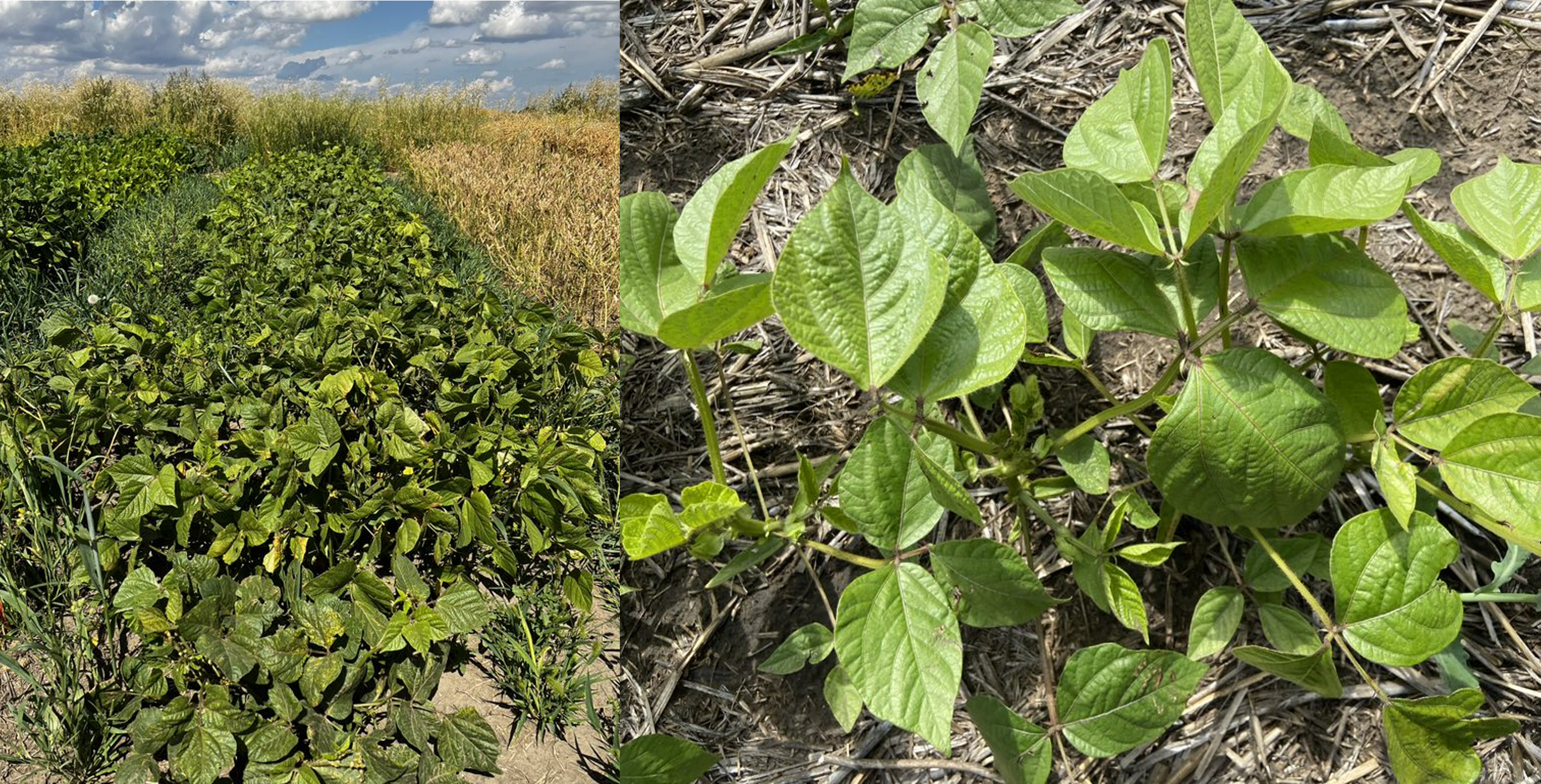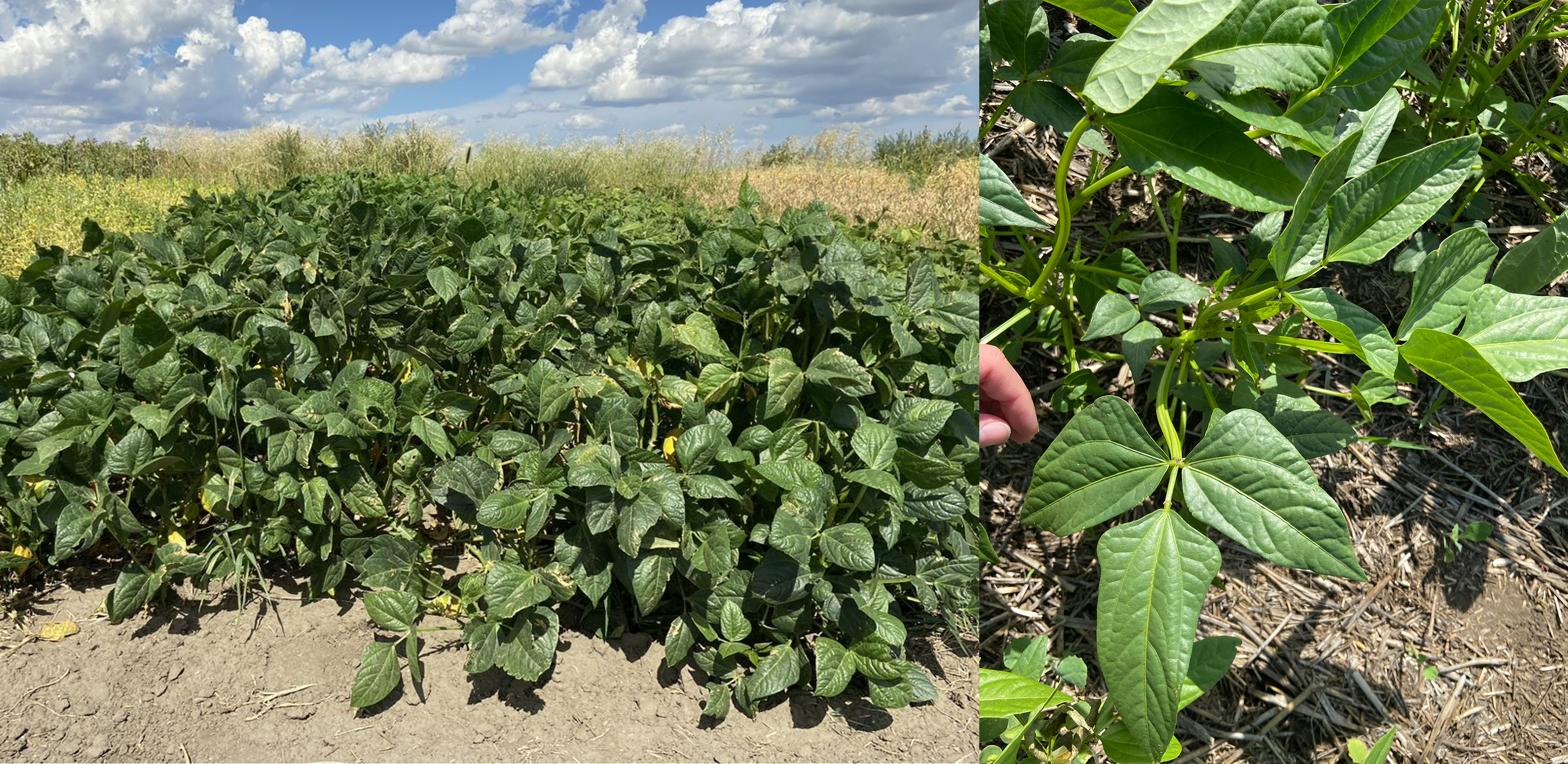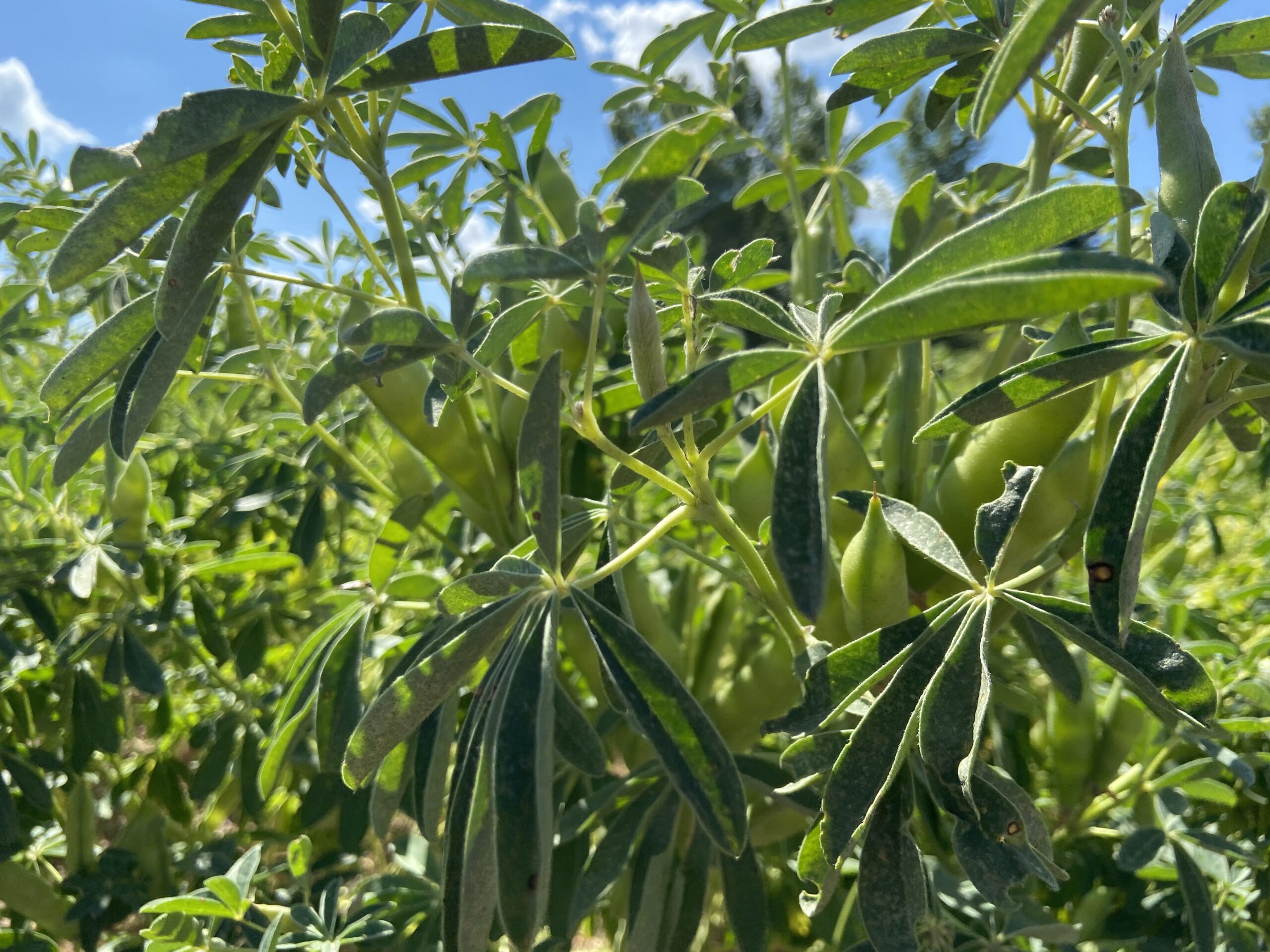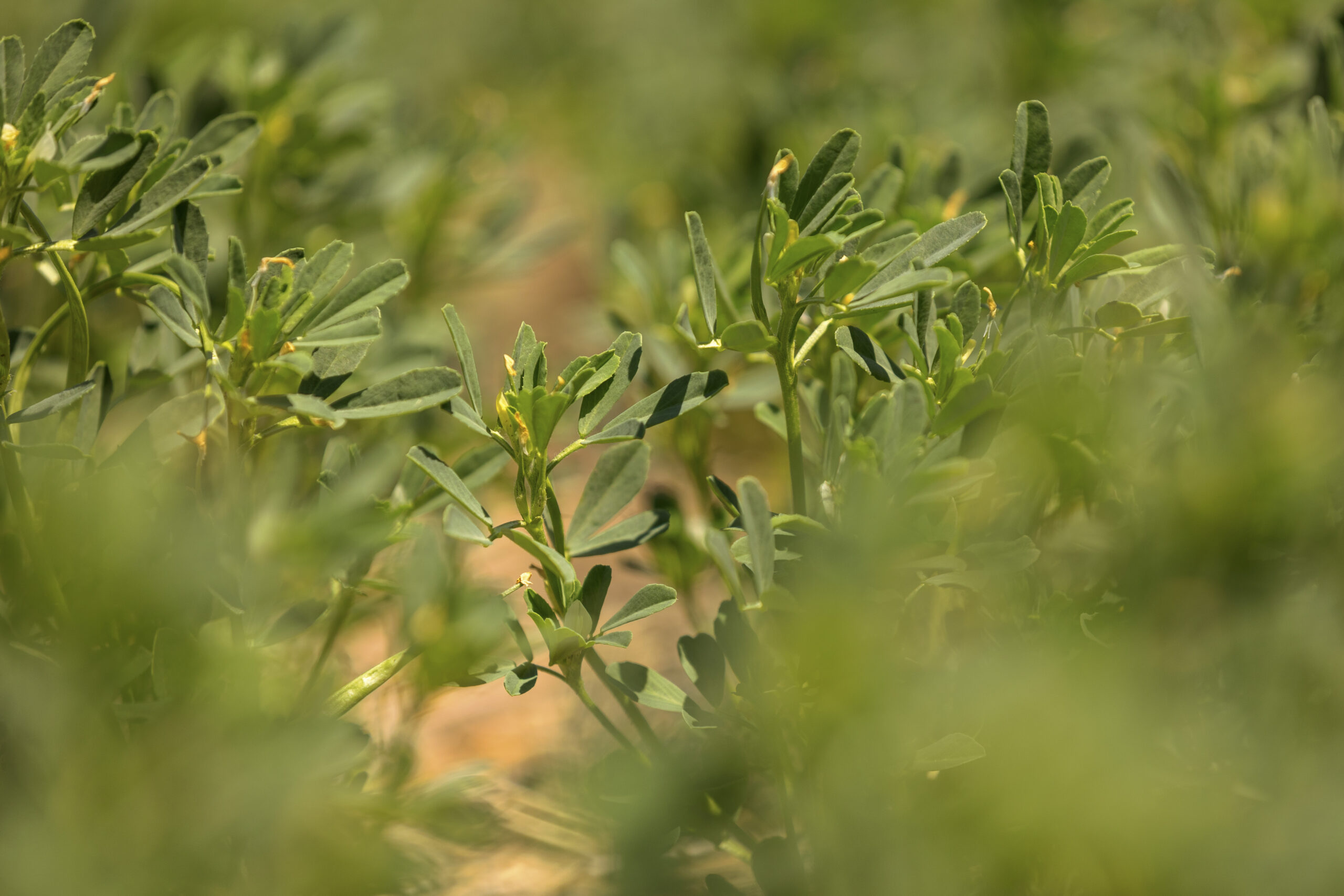By Delaney Seiferling

These days, it is generally agreed upon that pulse growers in Saskatchewan need to use every tool in their toolbox to continue to produce high quality, consistent crops that meet global needs. One of these tools is continually introducing diversity into crop rotations. This is why several experts within the Western Canadian agriculture world – with support from Saskatchewan Pulse Growers (SPG) – are working to adapt and promote the production of new and novel types of pulse crops in our province. Bryan Nybo, Manager at Wheatland Conservation Area, is one of them.
Bryan was the lead on a recent project that grew some of these newer types of pulse crops on a trial basis across the Agriculture Applied Research Management (AgriARM) sites based in Swift Current, Melfort, Outlook, Prince Albert, Indian Head, Scott, Redvers, and Yorkton in the last year. The goal of the project was to show producers how these crops grow in different environmental conditions and regions and give them some context around economics and marketing options.
Nybo and his team grew a minimum of ten pulse crops per site. This included common crops such as chickpea, green pea, yellow pea, red lentil, and green lentil, more novel crops such as soybean, faba bean, fenugreek, and dry bean, and new crops such as lupin, mung bean, and cowpea.
“Between the eight sites, it covers the whole province, pretty much all the soil zones, and eight different growing conditions,” Nybo says. “You get quite a wide look at where some crops are adapted to and where some aren’t.”
At the time of writing this article, crop yields and final data were still being compiled for all sites, and Nybo says the weather conditions for the year will have to be considered as well. It was a very dry year for some regions, such as Swift Current, but his non-official observations showed promise for some of the up-and-coming crops, specifically fenugreek and lupin.


Opportunities
These two crops hold a lot of potential for Saskatchewan, says Dale Risula, Provincial Pulse Specialist with the Government of Saskatchewan. Perhaps their most appealing trait is that they both have natural resistance to root rot, which is a major problem for pea and lentil growers in the province. Breeding efforts to date are trying to incorporate genetic resistance to root rot for future varieties.
Both crops also hold much appeal for end-use markets, Risula says. Lupin crops have a high protein content, while fenugreek has multiple end-use purposes: it can be harvested for hay for livestock feed or grown to maturity as grain, which can then be fractionated for numerous products including nutraceutical or industrial purposes. It also has a potential use for potash mining operations where it is used for froth flotation, with one mine in Saskatchewan already using it.
“A little bit of marketing is going to be necessary,” Risula says. “But if the price is right, there is a lot of opportunity there.”
He says with the right market growth in place, fenugreek could take off in the province. During the 2022 growing season, approximately 2,300 acres were grown in Saskatchewan.
“That could really support our farmers and I think the acres would really expand rapidly.”
Mung bean is another crop with a lot of potential, with an already existing market as an industrial source of starch, while cowpea is commonly used as a substitute for pea or chickpeas in Asia. Risula says variety development work in cowpea is already underway.
“I think there is a possibility there may be some varieties in the pipeline that could work in Saskatchewan fairly soon.”


Challenges
Having marketing opportunities for these crops is only part of the challenge. Producers must also be able to grow them in their region and have the proper knowledge and capacity to process them.
For lupin, the challenge is that the crop will likely be more time- consuming and costly to process due to their fibre content. The hull (fibre) accounts for 25% of the seed and is tightly adhered to the cotyledon, therefore it could present challenges in removing and finding a market for high volumes of fibre. “So, whether it fits into the marketplace compared to other pulses will be a question that processors will have an answer to in the future”, Risula says.
The challenge with mung bean will be adapting it to our growing season, as experiments in Alberta found it matured way too late. “They found was that it was only just starting to flower in middle of August so that is going to be an issue in Saskatchewan,” Risula says.
These challenges should not be a deterrent, says Mark Olson, previously the Unit Head for Pulse Crops at the Ministry of Alberta Agriculture and Forestry. He has been studying novel pulse crops for more than two decades in Western Canada and all pulse crops since the mid-1980s, specifically looking at potential for growing lupin and mung bean in Western Canada, as well as winter pulse crops such as field pea, lentil, and faba bean in Alberta.
In Mark’s mind, adapting new crops to our growing region and processing infrastructure is just a small portion of ongoing efforts in the pulse industry. For example, we are still learning how to best produce pea and lentil on the prairies, he says.
“There is always growing pains. There is a learning curve that goes along with these crops. Adaptation to the Western Canadian growing environment of not only the crop species but specific varieties need to be taken into consideration.”
Mark says the importance of diversity cannot be understated. It is already known that it is important to have pulses in your rotations for diversity, but diversity within your pulse crops themselves helps break up cycles of disease, pest, and weed cycles.
Introducing new pulse crops into rotations is more important now than ever before, Olson says, because of their nitrogen fixing ability. “There are huge environmental benefits anytime you don’t have to apply manufactured fertilizer or transport it to the farm,” he says. “You are reducing the carbon footprint on the farm and in your cropping systems.”
Earlier this year, the federal government newly announced targets of reducing fertilizer emissions from Canada’s agriculture industry by 30% by 2030.
For all these reasons, Nybo hopes this type of research will continue at AgriARM sites in the future, with more emphasis on replicated studies to build concrete data that can be passed onto growers.
This goal is supported by SPG’s research goals of ensuring there is at least one pulse crop available for every acre of arable land in Saskatchewan and to mitigate root rots in peas and lentils through new and diversified pulse crop acres.
“I think it is pretty important for producers to have other options,” Nybo says.
Published October 2022



